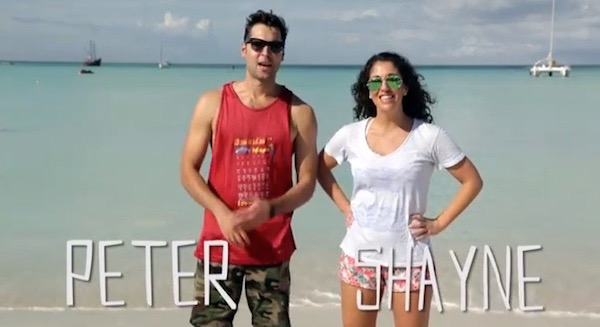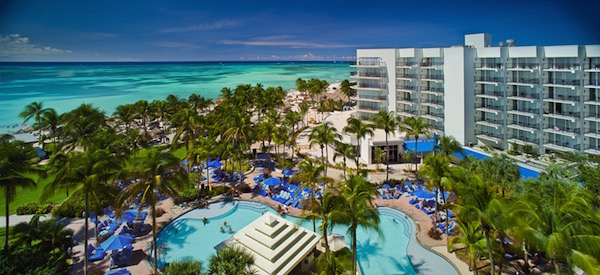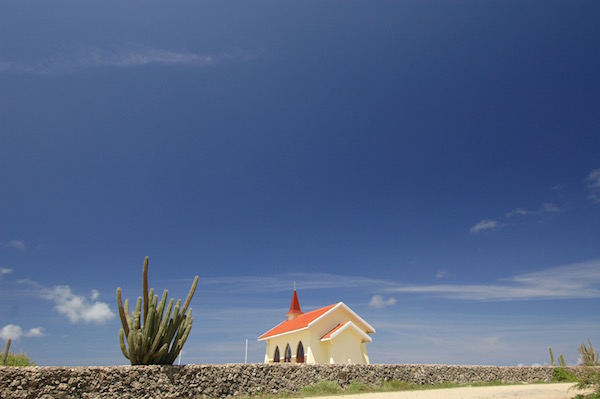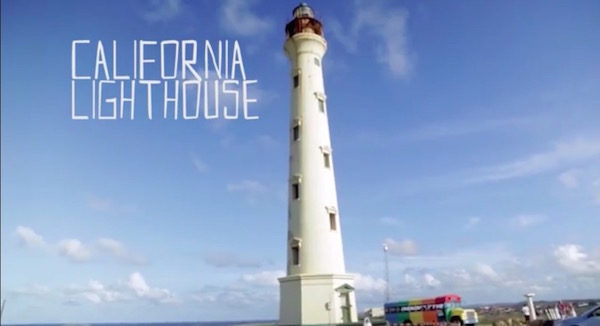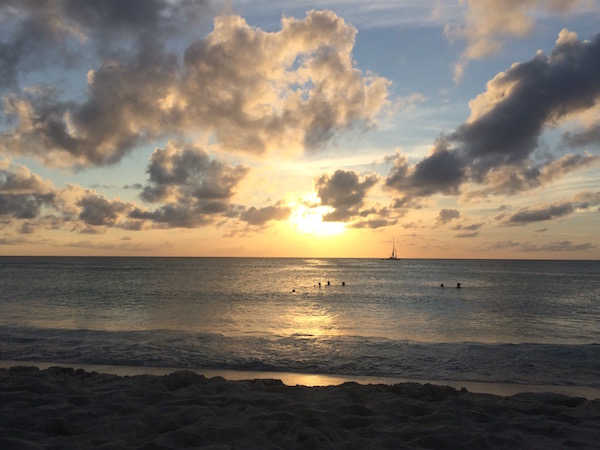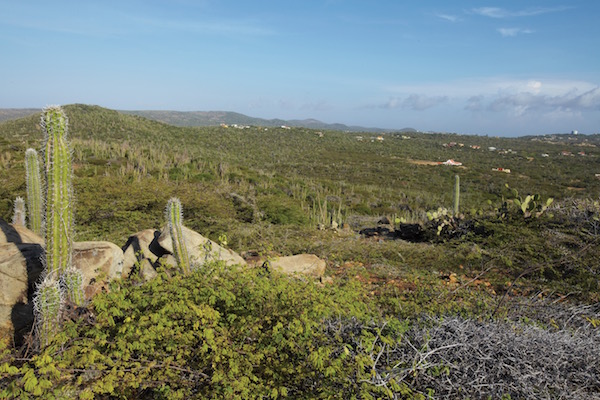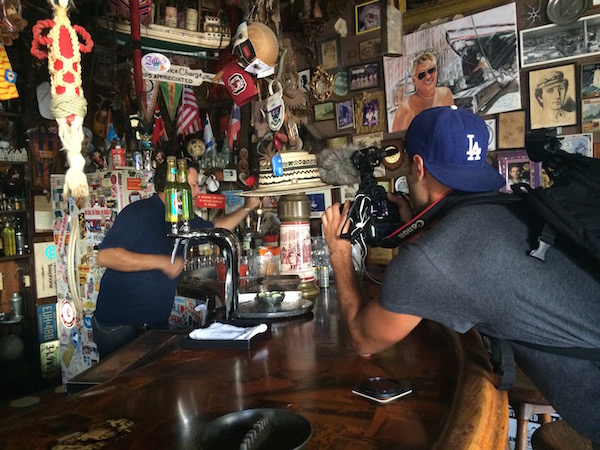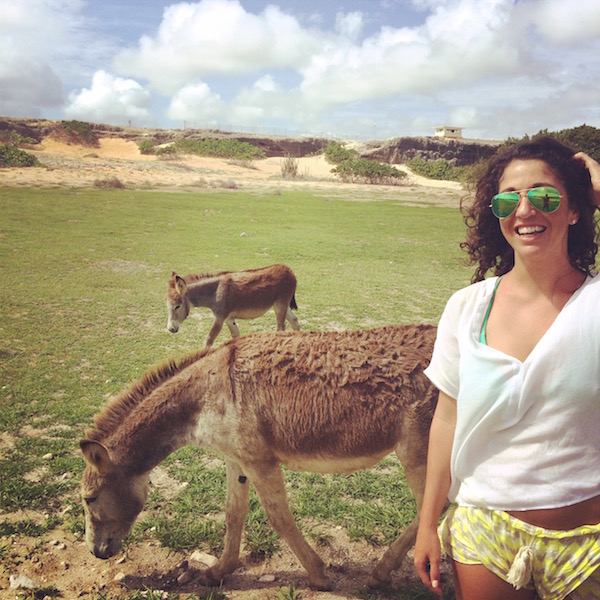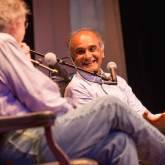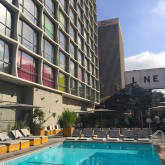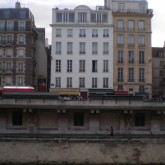What happens when you pair a video blogger with a travel journalist and set them loose on Aruba for 48 hours? It’s not quite a scenario out of The Real World—“when people stop being polite and start getting real”—but hijinks documented on video definitely ensued. I teamed up with Peter Bragiel of In Transit TV to capture the island, thanks to an invitation from the Aruba Marriott Resort & Stellaris Casino. Check out our video below:
Part of the southern Caribbean’s ABC islands (which includes Bonaire and Curaçao), Aruba is known for its cactus-strewn desert landscape, consistent 82 degree temperatures and its Dutch heritage with a melting pot of cultures. In fact, 95 nationalities are represented on the island, located only 15 miles north of Venezuela, and there are four official languages—Dutch, Papiamento (a native dialect of African and Portuguese origin), Spanish and English.
In exploring Aruba, Peter and I opted to forgo organized tours and looked beyond the typical tourist zones with the objective of unearthing Aruba’s local color at our own pace. Our first move was to walk across the island.
Day 1 – Explore Noord
10 a.m. – Walk across Aruba to Alto Vista Chapel. On In Transit TV, Peter creates episodic travel videos capturing amazing journeys, like the Trans-Siberian Railway, canoeing the Mississippi River and trekking through Mexico and Central America on public transportation. Aruba is about 70 square miles and six miles across at its widest, so we thought it would be a fun adventure to walk from one side of the island to the other.
From the Marriott’s Palm Beach, the eastern and more rugged coast is approximately four miles away. We set out with sneakers, sunscreen and a tourist map to navigate our way through residential Bakval, where we encountered protective neighborhood guard dogs, before hitting a nature trail leading us to the other coast. The sight of the ocean was a relief in the midday heat, and soon we spotted Alto Vista Chapel’s cool yellow walls and terracotta tile roof on the horizon.
A modest sanctuary in the middle of the desert, Alto Vista is also known as Pilgrim’s Church, a fitting title, we thought, considering our journey on foot. Originally constructed in 1750 by Venezuelan missionaries, this one-room chapel was rebuilt in 1952 and is open to public prayer daily.
We found a tiny patch of shade under a cactus and quenched our thirst with fresh coconut water straight from the fruit from a nearby stand before catching a cab back to the Marriott.
1 p.m.  – Lunch at Moomba Beach Bar on Palm Beach. Palm Beach encompasses Aruba’s main hotel zone, lined with lounge chairs, palapas and boats moored just offshore. With plenty of beach bars to choose from, we strolled through the sand to grab lunch at Moomba Beach Bar, a popular spot serving typical beach bar fare, like sandwiches, wraps and salads with plenty of fresh fish on the menu. We washed everything down with a cold, refreshing Balashi, Aruba’s local beer.
3 p.m. – Visit California Lighthouse. Eager to see more of the island, we rented a car and drove up the coast towards the California Lighthouse. Named for the steamship California that wrecked on the island’s northern point in 1891, the lighthouse was erected in 1916 and remains a point of interest in Aruba today.
3:30 p.m. – Sunset at Arashi Beach. Next, it was time to enjoy what most people come to Aruba for, a little rest and relaxation at the beach. We opted for tranquil Arashi Beach, loved by locals, and a great place to end the day with a swim and the sunset.
Aruba is ideal for water sports enthusiasts with ample coral reefs and shipwrecks just offshore for snorkeling and diving, as well as steady trade winds conducive to kite surfing. Peter and I were content to simply cool off in the waters at Arashi with its mellow tide of gentle waves, and take in the scene of local kids and families splashing in the surf.
7 p.m. – Dinner at Old Cunucu House. On the hunt for traditional Arubian cuisine, we came across the Old Cunucu House, in the hotel zone just off the beaten path. With culinary roots dating back to the native Arawak tribe, Dutch influences and its unique island setting, Arubians feast on fresh fish, hearty stews and fried polenta. Many dishes are complimented with hot papaya sauce and covered in gouda cheese.
I ordered one of Aruba’s most traditional dishes, keshi yena, baked gouda typically stuffed with chicken, olives, onions, peppers, cashews and raisins. Peter opted for the higra hasa, beef liver with onions and rice. We started with a sampling of Arubian fried delights, including pastechis stuffed with cheese (similar to empanadas) and the mildly sweet pan bati (traditional Arubian bread).
Day 2 – Explore South
10 a.m. – Drive south to San Nicolaas. Curious about Aruba’s small towns, we took a drive south towards San Nicolaas, passing the capital Oranjestad with its colorful Dutch-style architecture and Santa Cruz, an inland, residential neighborhood dotted with Chinese groceries. In San Nicolaas, we found a sleepy Main Street midday with a few shops and restaurants open, along with the occasional passersby and school children dressed in uniform.
11 a.m. – Visit Baby Beach and Colorado Point. At the southern end of the island, we cruised the coast and visited the remote, wind-whipped Bachelor’s Beach, Baby Beachand Seroe Colorado Natural Bridge providing unspoiled views of the island’s craggy southeastern perimeter.
1 p.m. – Lunch and Balashis at Charlie’s Bar. Hungry for lunch, we circled back towards San Nicolaas to Charlie’s Bar, a funky, local dive covered in crazy ephemera from the inside out. Think, license plates, funny signs, portrait drawings, international flags, stickers, sailor’s knots, sports memorabilia and just about anything else you can imagine. We refueled on conch fritters (admittedly, more fritter than conch) with a variety of house made “honeymoon” papaya and mango hot sauces, and of course, a couple of cold, refreshing Balashis.
3 p.m. – Explore Arikok National Park. Our final attraction for the day was Arikok National Park whose wild, desert terrain covers 18 percent of Aruba. Famous for its plateaus of limestone cliffs and caves, Arikok provides dramatic vistas of waves crashing against the rocky coast. While some portions of the park, like the Natural Pool, are only accessible by four-wheel drive, we managed to navigate through the Guadirikiri Caves,the Fontein Caves and Boca Prins during our visit. We encountered goats, lizards and a herd of friendly donkeys along the way.
7:00 p.m. – Dinner at West Deck. To celebrate our final night in Aruba, we dined at the newly opened West Deck in Oranjestad. Situated on a covered deck on the Caribbean Sea, twinkling with string lights, the cuisine is a modern spin on traditional Arubian dishes in a small plates format. Must haves include fried funchi (polenta covered in Dutch gouda), Trocadero garlic shrimp and fish sliders with papaya. And for Peter and I, no meal in Aruba was complete without a frosty Balashi beer and a cheers to paradise.
A version of this story originally appeared on Miami.com


